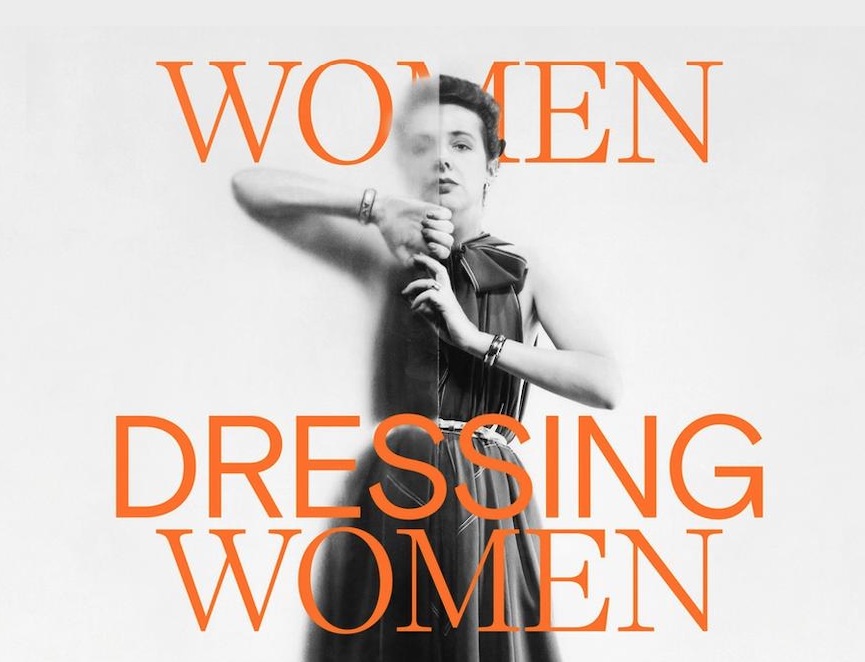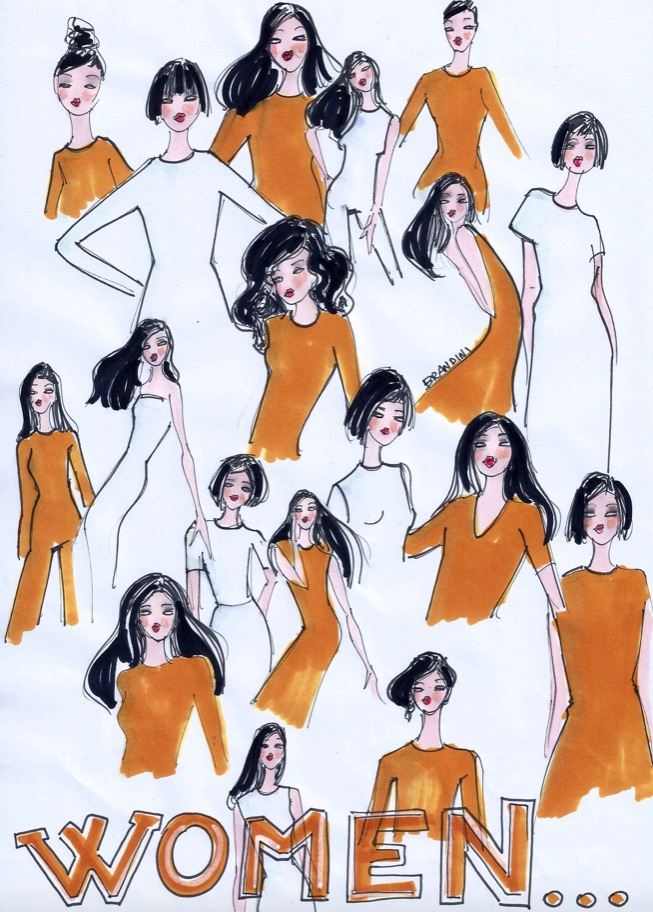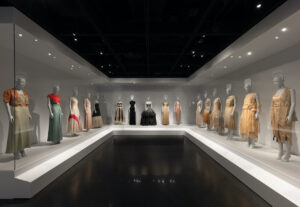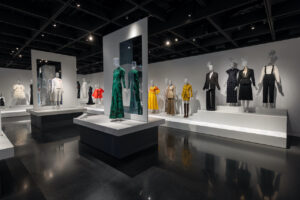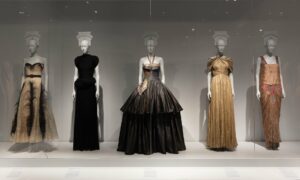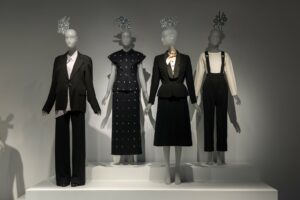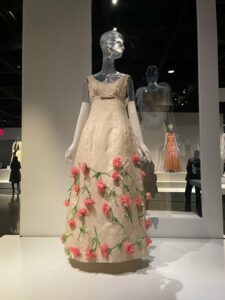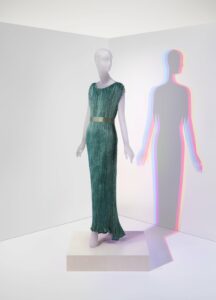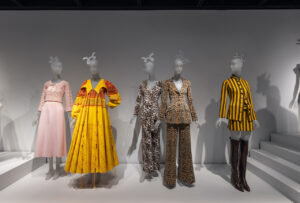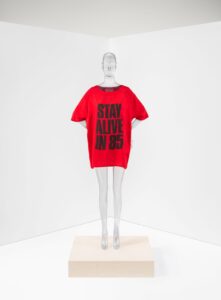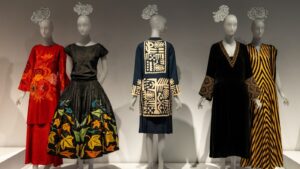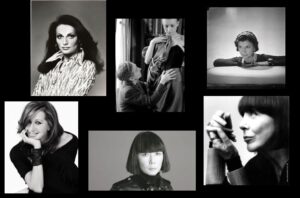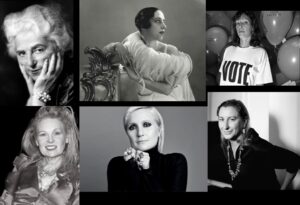Detail of the exhibition banner
Women by Beatrice Brandini
At the Costume Institute of the Metropolitan Museum of Art in New York, the sometimes overlooked genius of women designers is celebrated.
Overview of the Met exhibition Women Dressing Women
Women Dressing Women is a tribute to the female designers who, since the beginning of the last century, have revolutionized fashion with styles, creativity and innovative and ingenious solutions, which only women could create for other women.
Overview of the Met exhibition Women Dressing Women
They range from the pinball style of the 1920s, to the work clothes of the 1940s, from the revolution of the 1970s, to the glamorous outfits of the 1980s/90s. Women who celebrated women with functional and beautiful clothes, who were often denied the same notoriety reserved for men.
Evening dress by Ann Lowe
Fortuny Delphos gown (designed by Mariano Fortuny’s wife, Henriette)
Women Dressing Women is an exhaustive and stimulating look at the past, a tribute to the women who, through fashion, contributed to changing aesthetic standards but also culture. An exhibition that we could define as feminist, but which I like to call “right”. There have been and still are many women in fashion, many of them have innovated and revolutionized costumes, but we have often forgotten about it.
Overview of the Met exhibition Women Dressing Women
Katharine Hamnett’s anti-nuke Stay Alive in 85 slogan T-shirt
We celebrate the great Vivienne Westwood who never compromised, she never gave up her punk aesthetic. Katharine Hamnett who created, ante litteram, t-shirts with slogans in favor of ecology and peace. Further down the decades, we think of Claire McCardell (see my post from 2020: https://www.beatricebrandini.it/claire-mccardell-the-american-who-invented-sportswear-making-women-more-free/?lang=eng ) who, supporting female professional autonomy, introduced elements of functionality and freedom into her creations, the same ones we still find today in our clothing daily.
Overview of the Met exhibition Women Dressing Women
Some of the greatest female designers ever
I then think of Sonia Rykiel with her wonderful knit, to Ann Lowe, a black designer who worked during the period of segregation, Jacqueline Kennedy’s off-the-shoulder and ruffled wedding dress was designed by her, even though she didn’t get any credit at the time. And again, Coco Chanel (freedom and allure, pearls, tweed, trousers, le petite robe noir), Jeanne Lanvin (creative and visionary), Elsa Schiaparelli (the surprise in a dress, but also art), Madame Grès (sculptural cuts for timeless elegance), Madeleine Vionnet (the queen of the bias), Donna Karan (she brought class to the American style), Jil Sander (minimal and refined), Diane von Furstenberg (hers is the most copied dress, still today, the wrap -dress), Krizia (the first to understand the concept of lifestyle), Rei Kawakubo (brilliant), Miuccia Prada (innovation, creativity and courage, never predictable), Maria Grazia Chiuri (today proudly at the head of Dior, the first woman to hold this position)….
The exhibition is divided into four themes: anonymity, visibility, representation and absence/omission. The first theme and the last are very important; anonymity aims to enhance the figure of the seamstress in her own workshop, a figure which, as it evolved, became that of the couturière and designer, which has always been fundamental to the fashion system. The last one, that of absence, examines that category of people who have only recently received credit for their work, previously hidden recognition.
Some of the greatest female designers ever
In short, a beautiful exhibition that underlines how many female talents there have been, lived in different eras, but above all that the role of women, even in the creative field, can never be separated from the one they have had in society. We think that the right to vote for Italian women dates back to NOT far away 1945 (America 1920, Germany 1919, United Kingdom 1928, France 1944, China and India 1949, Mexico 1953…). Sadly too recent dates, especially if we consider that the first universal suffrage dates back to 1893 (New Zealand).
Here I believe that this is what we should talk about, together with the disparity in wages, the impossibility of managing, and therefore having to necessarily choose, between career and family, the freedom to study… and not about absurdities like the one about Snow White, which does not she was consenting when she was kissed by the Prince.
Good life to everyone!
Beatrice


